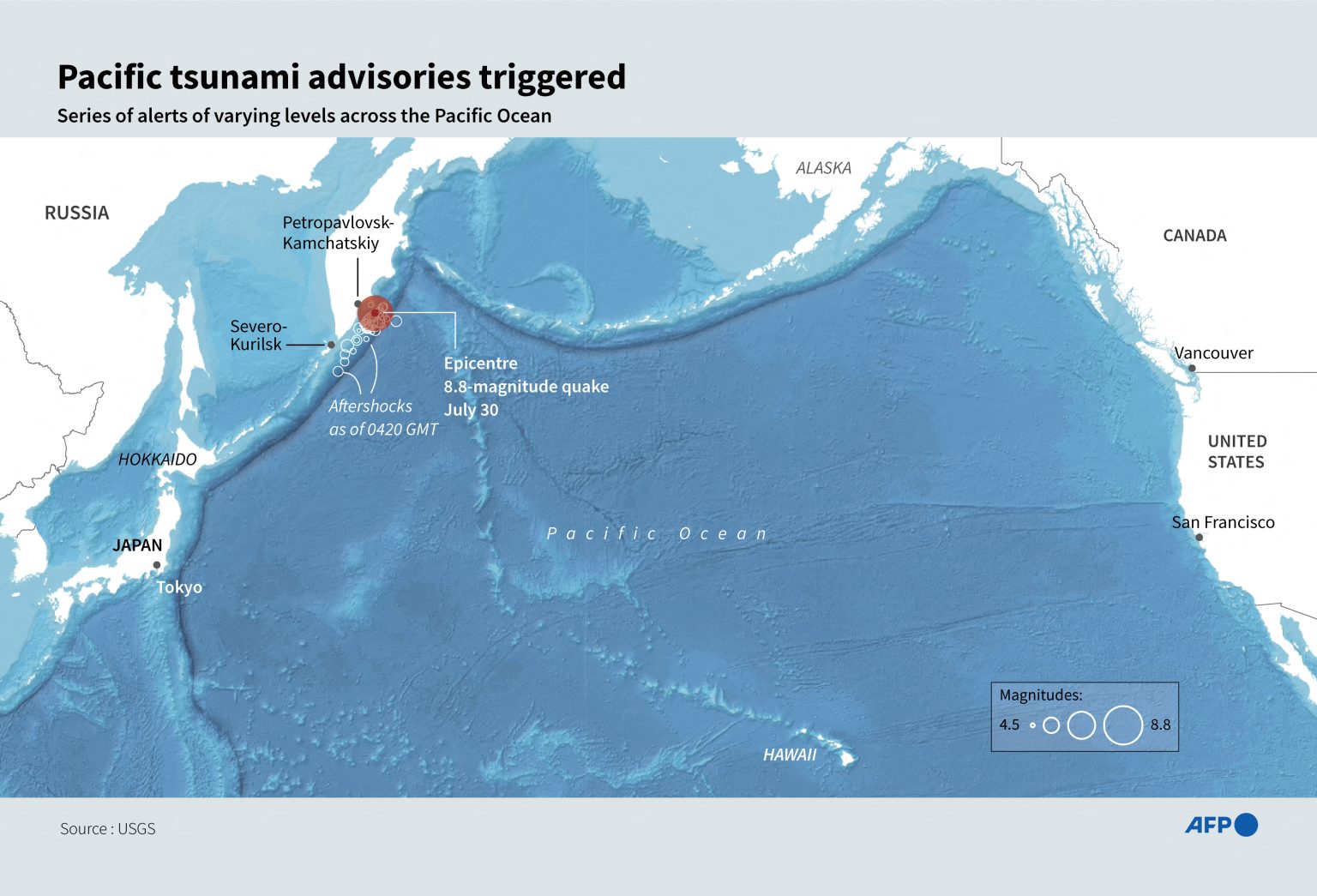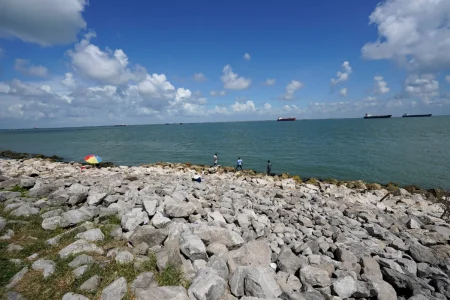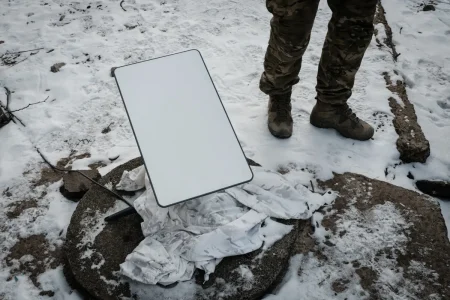Kamchatka’s Seismic Symphony: Understanding Russia’s Earthquake Zone
In the remote eastern edge of Russia, where volcanoes touch the sky and the Pacific Ocean crashes against rugged shores, the Earth has been restless. The Kamchatka Peninsula, one of our planet’s most geologically dynamic regions, has been experiencing a symphony of seismic activity that reminds us of nature’s raw power. Following Thursday’s massive 7.8 magnitude earthquake, a series of aftershocks ranging from 4.5 to 5.5 magnitude continued to rattle the region throughout Friday, keeping residents and scientists on alert. This recent activity comes just two months after an even more powerful 8.8 magnitude quake shook the peninsula, highlighting the area’s position along the infamous Pacific Ring of Fire – a horseshoe-shaped belt where approximately 90% of the world’s earthquakes occur.
Thursday’s significant earthquake struck approximately 80 miles off the Russian coast at a relatively shallow depth of 6 miles. The event briefly triggered tsunami warnings across the Pacific, causing moments of anxiety for coastal communities. While these warnings were ultimately lifted with no major tsunami materializing, officials reported modest tsunami waves of 1 to 2 feet along various points of the peninsula’s coastline. The National Oceanic and Atmospheric Administration (NOAA) quickly assessed that Hawaii faced no threat despite initial Pacific-wide cautions. The aftermath saw a pattern of continuous seismic disturbances, with fresh aftershocks occurring almost hourly throughout Friday, nature’s way of settling into a new equilibrium after a major geological adjustment.
The U.S. Geological Survey (USGS) has been diligently tracking this seismic sequence, recording and confirming 14 separate seismic events within a 12-hour period. Despite the frequency and magnitude of these quakes, there have been no reports of significant damage or injuries – a testament perhaps to both the offshore location of the epicenters and the resilience built into local infrastructure. By Friday evening Eastern Time, the Earth’s rumbling had temporarily subsided, with several hours passing without further significant quakes. Scientists are carefully analyzing the clustered timing and proximity of these events to determine whether they represent a predictable sequence of related disturbances or independent ruptures along the same fault zone – crucial information that could help forecast future seismic behavior in the region.
At the heart of this geological drama sits Petropavlovsk-Kamchatsky, the capital of Kamchatka Krai and one of the world’s most isolated major cities. Accessible only by air or sea, this remote urban center perches on the edge of Avacha Bay in Russia’s Far East, surrounded by snow-capped volcanoes and dramatic landscapes that simultaneously create both its breathtaking beauty and its seismic vulnerability. Despite – or perhaps because of – its isolation and natural hazards, the city serves as an important hub for scientists studying earth processes and adventurous tourists drawn to its pristine wilderness. Life here has adapted to the constant geological uncertainties, with residents embodying the resilience required to build communities in one of Earth’s most volatile regions.
The Kamchatka Peninsula’s location along the Pacific Ring of Fire places it at the convergence of tectonic plates, where the Pacific Plate subducts beneath the Okhotsk Plate, creating the perfect conditions for frequent seismic and volcanic activity. This geological positioning has shaped not only the physical landscape but also the cultural identity of the region, where respect for nature’s power is woven into daily life. The recent earthquake sequence serves as a reminder of the dynamic forces continuously reshaping our planet’s surface – forces that operate on timescales and magnitudes that can be difficult for humans to comprehend. Each tremor represents energy released from the slow grinding of these massive planetary plates against one another, a process that has been ongoing for millions of years and will continue long after our brief human presence.
Looking ahead, seismologists will maintain close observation of the region, watching for patterns that might indicate increased risk or provide valuable data to improve earthquake prediction capabilities. There remains concern that further significant seismic events could potentially generate tsunamis that might impact distant shores, including Alaska and Hawaii. This international dimension of earthquake monitoring highlights our interconnected vulnerability to natural disasters and the importance of global cooperation in earth sciences. As communities across the Kamchatka Peninsula continue to feel the Earth shifting beneath them, they join the millions of people worldwide who live along the Ring of Fire – all participating in humanity’s ongoing dialogue with our planet’s most fundamental forces, learning to respect, understand, and coexist with the powerful geological processes that have shaped Earth since its formation.















